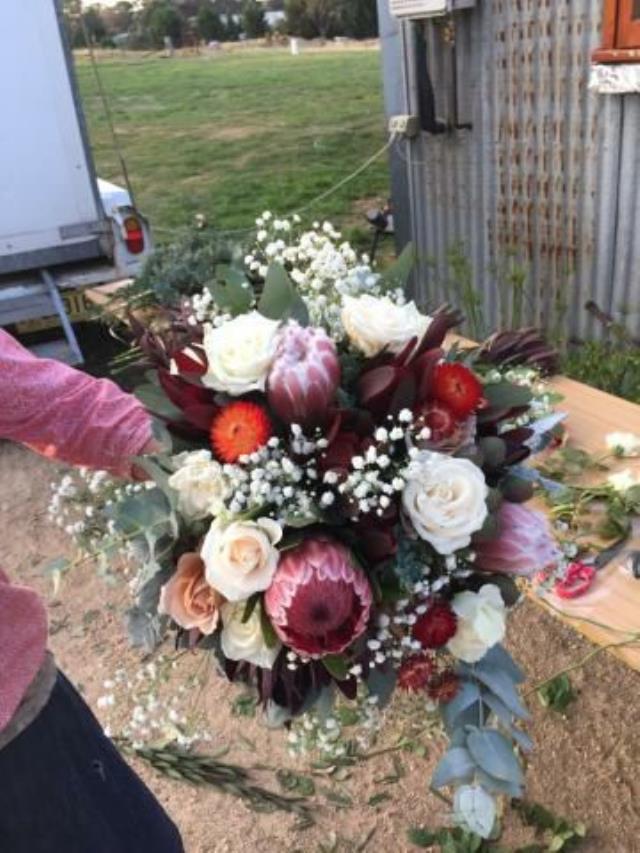By Beatrice Hawkins
I’ve been travelling again and enjoying the changing colours of the deciduous English trees through the New England and Southern Highlands. The red oaks and liquid ambers are really lovely and the brilliant yellow of the golden ash was a sight to behold. There certainly are advantages to colder climates for tree enthusiasts.
A flower that has been a part of many celebrations in my life is the Protea and particularly ‘pink ice protea’, so this week I have researched them to see if it would be possible to grow them in our area.
Over the years I have received arrangements including them from my husband and they have been the flower of choice for bouquets and/or decorations at the weddings of both of our daughters and over Easter, once again, featured at our eldest grand daughter’s wedding.
They are a truly beautiful flower and, while native to South Africa not Australia, are of the same family as our spectacular waratahs, banksias, hakeas and grevilleas.
I have seen them growing well in fairly arid country in W.A. and also in the colder country on the slopes of Mt Canobolas near Orange in NSW. From this diversity of locations and soil types I would think that they are a very adaptable plant and in fact can do well in a temperature range of -5 degrees centigrade to +38 degrees but would not thrive if subjected to either of these for long periods of time.
On researching these spectacular flowers the first thing I found was that the Pink Ice variety is the hardiest of the protea family and once established they are both dry and frost tolerant. Perfect for our area. They grow to 2 metres wide and 2.5 high and are suitable to either part shade or full sun and flower autumn and winter thought to Spring…sounding better all the time!
They like nutrient-poor, free-draining soil and tolerate dry winters and wet summers or the opposite. If the soil is clay, fix that by adding grit and bark as they don’t like wet feet, or by building the bed up about 30 centimetres. Apparently their root system is not deep and so they do not tolerate water pooling on the soil. Mulch well to suppress weeds as they do not like the root disturbance that pulling weeds causes.
They are the perfect specimen plant for dry climate or water wise gardens. The only disadvantage that I can find is that they are relatively short lived at only 10 -15 years. However new plants can be struck by taking stem cuttings and, as they are a good specimen in a large pot, they can be ready to replace the faltering plant as it gets to the end of its life. Only use native plant fertiliser for them and this only sparingly. They really do not like phosphorous fertilisers. Spent flowers should be trimmed off in spring to maintain the shape of the plant and encourage more flowers next winter. I am particularly fond of the pink ice but there is a wide range including the magnificent White King with the largest flowers of all.
Maybe I need to find a corner for one of these lovely, versatile plants in what will be a largely native garden bed.
The next item on the agenda for the horticultural society is a night out with local horticulturist Brian Sams on Wednesday May 30th at 7pm, in the CWA rooms in Grafton Street. Everyone is invited to this free information night to hear an entertaining speaker and enjoy a delicious supper afterwards.
For catering purposes it would be appreciated if your intention to attend could be indicated by ringing Beatrice (0488 470706) or Erica (0447 417498).
Soon after this we will be taking a bus to the garden day at Esk on the 16th June. Tickets are available for a good day out from Danny Lyons on Palmerin Street.
*This is an old article that has been digitised so our readers have access to our full catalogue.







